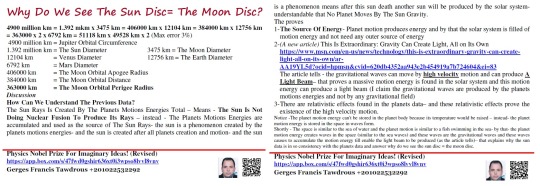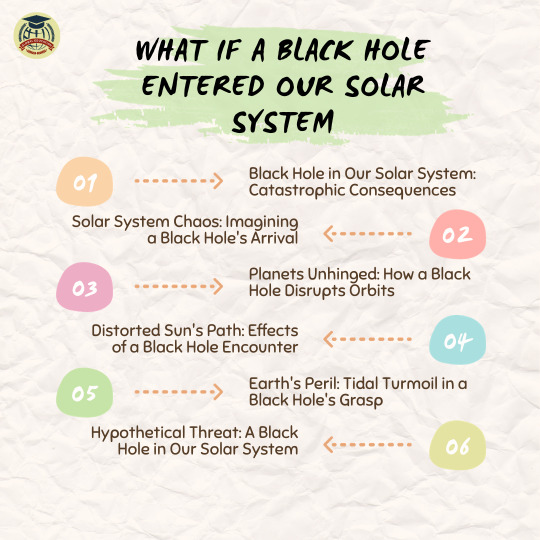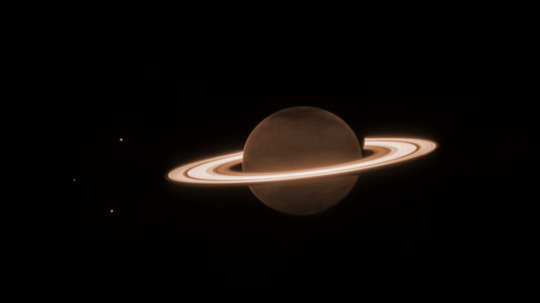#cosmicwonders
Text
100 Fascinating Facts about Markarian's Chain
100 Fascinating Facts about Markarian's Chain and how James Webb Telescope will reveal its mysteries. Read the full article here

🌌✨ Exploring the Cosmic Marvels of Markarian's Chain! ✨🌌
Dive into the heart of the Virgo Cluster with our latest article revealing 100 fascinating facts about Markarian's Chain! 🌟🔭 From the gravitational ballet of interacting galaxies to the cosmic dance of spiral wonders, each fact unveils a new layer of celestial beauty.
🚀 Join the exploration as we unravel the mysteries of dark matter, peek into the hidden realms of infrared star formation, and gaze at captivating images captured by the Hubble Space Telescope. 🌠
🔍 But that's not all! Discover what the James Webb Space Telescope's upcoming observations might reveal, promising a deeper understanding of this cosmic spectacle.
Let the wonders of Markarian's Chain ignite your fascination with the boundless beauty of the universe! 🌌🔍 #SpaceExploration #MarkariansChain #CosmicWonders #AstronomyAdventure
#SpaceExploration#MarkariansChain#CosmicWonders#AstronomyAdventure#james webb space telescope#nasa#jwst#webb telescope#exoplanets#jameswebbtelescope#james webb discoveries
43 notes
·
View notes
Text
Turning thing I like into pixel art log uno!
All I really do is load an image I like into a pixel art app and colour it in (p.s it does not steal art I promise)
This is @pmseymourva 's OC cyana!

266 notes
·
View notes
Photo

I’m slowly getting into Cosmic Wonders only to realize that my main oc is, from a character concept pov, kinda like a mix between Rei and Pario/Ainanis/Vacuo. Decided to draw them together.
Pario/Ainanis/Vacuo and Rei belong to @pmseymourva
643 notes
·
View notes
Text

did someone order a smug gaia
@pmseymourva
#gaia#cosmic wonders#cosmicwonders#cosmic wonders fanart#cosmicwonders fanart#cosmic wonders gaia#pmseymourva#pmseymour#chinchilla#shes holding a feather duster#because dust#and chinchillas
352 notes
·
View notes
Text

Best Greetings
Why Do We See The Sun Disc= The Moon Disc?
4900 million km = 1.392 mkm x 3475 km = 406000 km x 12104 km = 384000 km x 12756 km = 363000 x 2 x 6792 km = 51118 km x 49528 km x 2 (Max error 3%)
4900 million km = Jupiter Orbital Circumference
1.392 million km = The Sun Diameter
3475 km = The Moon Diameter
12104 km = Venus Diameter
12756 km = The Earth Diameter
6792 km = Mars Diameter
406000 km = The Moon Orbital Apogee Radius
384000 km = The Moon Orbital Distance
363000 km = The Moon Orbital Perigee Radius
Discussion
How Can We Understand The Previous Data?
The Sun Rays Is Created By The Planets Motions Energies Total – Means - The Sun Is Not Doing Nuclear Fusion To Produce Its Rays – instead - The Planets Motions Energies are accumulated and used as the source of The Sun Rays
The sun is a phenomenon created by the planets motions energies- and the sun is created after all planets creation and motion- and the sun is a phenomenon means after this sun death another sun will be produced by the solar system- understandable that No Planet Moves By The Sun Gravity.
The proves
The Source Of Energy- Planet motion produces energy and by that the solar system is filled of motion energy and not need any outer source of energy
(A new article) This Is Extraordinary: Gravity Can Create Light, All on Its Own
https://www.msn.com/en-us/news/technology/this-is-extraordinary-gravity-can-create-light-all-on-its-own/ar-AA19YL5d?ocid=hpmsnHYPERLINK "https://www.msn.com/en-us/news/technology/this-is-extraordinary-gravity-can-create-light-all-on-its-own/ar-AA19YL5d?ocid=hpmsn&cvid=620db4352aa943e2b454919a7b724604&ei=83"&HYPERLINK "https://www.msn.com/en-us/news/technology/this-is-extraordinary-gravity-can-create-light-all-on-its-own/ar-AA19YL5d?ocid=hpmsn&cvid=620db4352aa943e2b454919a7b724604&ei=83"cvid=620db4352aa943e2b454919a7b724604HYPERLINK "https://www.msn.com/en-us/news/technology/this-is-extraordinary-gravity-can-create-light-all-on-its-own/ar-AA19YL5d?ocid=hpmsn&cvid=620db4352aa943e2b454919a7b724604&ei=83"&HYPERLINK "https://www.msn.com/en-us/news/technology/this-is-extraordinary-gravity-can-create-light-all-on-its-own/ar-AA19YL5d?ocid=hpmsn&cvid=620db4352aa943e2b454919a7b724604&ei=83"ei=83
The article tells - the gravitational waves can move by high velocity motion and can produce A Light Beam– that proves a massive motion energy is found in the solar system and this motion energy can produce a light beam (I claim the gravitational waves are produced by the planets motions energies and not by any gravitational field)
There are relativistic effects found in the planets data– and these relativistic effects prove the existence of the high velocity motion.
Notice
The planet motion energy can't be stored in the planet body because its temperature would be raised – instead- the planet motion energy is stored in the space in waves form.
Shortly
The space is similar to the sea of water and the planet motion is similar to a fish swimming in the sea- by that- the planet motion energy creates waves in the space (similar to the sea waves) and these waves are the gravitational waves and these waves causes to accumulate the motion energy till enable the light beam to be produced (as the article tells)– that explains why the sun data is in so consistency with the planets data and answer why do we see the sun disc = the moon disc.
Thanks a lot
Physics Nobel Prize For Imaginary Ideas! (Revised)
or
Gerges Francis Tawdrous +201022532292
Peoples' Friendship university of Russia – Moscow
ORCID https://orcid.org/0000-0002-1041-7147
Facebook https://www.facebook.com/gergis.tawadrous
VK https://vk.com/id696655587
Tumblr https://www.tumblr.com/blog/itsgerges
Researcherid https://publons.com/researcher/3510834/gerges-tawadrous/
Livejournal https://gerges2022.livejournal.com/profile
box https://app.box.com/s/47fwd0gshir636xt0i3wpso8lvvl8vnv
Academia https://rudn.academia.edu/GergesTawadrous
Publications http://vixra.org/author/gerges_francis_tawdrous
#Moon#LunarExploration#MoonMission#SpaceExploration#ApolloProgram#CelestialBodies#AstroPhotography#LunarSurface#MoonLanding#NASA#SpaceScience#Astronomy#MoonBase#MoonRover#MoonPhase#CosmicWonders#DarkSideOfTheMoon#MoonObservation#LunarScience#SkyGazing#физика#астрофизика
2 notes
·
View notes
Text
#Moon#LunarExploration#MoonMission#SpaceExploration#ApolloProgram#CelestialBodies#AstroPhotography#LunarSurface#MoonLanding#NASA#SpaceScience#Astronomy#MoonBase#MoonRover#MoonPhase#CosmicWonders#DarkSideOfTheMoon#MoonObservation#LunarScience#SkyGazing
0 notes
Text
James Webb Space Telescope Reveals Unprecedented Details of Uranus

The James Webb Space Telescope has unveiled a breathtaking new portrait of Uranus, offering an intricate view of the ice giant’s concealed rings, moons, weather patterns, and atmosphere. This detailed imagery, a far cry from the limited view captured more than three decades ago, showcases previously unseen facets of the planet, shedding light on its dynamic nature.
Unveiling Hidden Features
Uranus, observed during Voyager 2’s flyby in 1986, appeared as a bright blue world through visible light. However, the James Webb Space Telescope’s capacity to perceive infrared light, imperceptible to the human eye, has exposed a plethora of details typically absent in conventional telescope images. This revelation of Uranus’ intricate features marks a significant breakthrough, emphasizing the James Webb Space Telescope’s capability to unravel mysteries in our cosmic vicinity.
Insights Paving the Way for Future Exploration
Astronomers’ eagerness to send a dedicated mission to study Uranus has intensified, as highlighted in a 2022 report. Gathering comprehensive information about the icy planet, exemplified by the intricate Webb image, becomes imperative before launching a spacecraft for further investigation. NASA’s recent release of the image, surpassing a previous version from April, encompasses enhanced details, notably capturing Uranus’ usually faint inner and outer rings, along with nine of its 27 known moons depicted as blue dots.
NASA releases new images of Uranus, offering a glimpse of one rarely-seen feature
youtube
Unraveling Uranus’ Peculiarities
The image accentuates Uranus’ distinctive characteristics, notably its pronounced seasonal white north polar cap, taking prominence as the pole aligns toward the sun during its approach to solstice, anticipated in 2028. Uranus’ peculiar axial tilt, spinning on its side at 98 degrees, results in extreme seasons, where a year lasts approximately 84 Earth years. This unique spin accentuates a prolonged dark winter lasting 21 Earth years on one half of the planet.
Insight into Planetary Dynamics
The depiction of storms within Uranus’ atmosphere near and beneath the polar cap holds immense scientific intrigue. Astronomers eagerly anticipate observing shifts in the polar cap and the planet’s weather patterns as it approaches solstice, seeking to comprehend the meteorological forces influencing these phenomena. The study of Uranus’ complex atmosphere is poised to unravel deeper insights into the planet’s seasonal changes and meteorological dynamics.
Mysteries and Bridging Knowledge Gaps
Despite Voyager 2’s historic flyby, much remains enigmatic about Uranus and Neptune, the ice giants on the solar system’s periphery. Recent discoveries of X-rays emanating from Uranus and observations suggesting spacecraft encounters with magnetic bubbles have amplified the quest for understanding these distant planets.
Comprehending Uranus holds broader implications, aiding astronomers in deciphering the formation of ice giant-sized exoplanets beyond our solar system. Insights gleaned from Uranus could illuminate the origins and nature of similar worlds discovered among the thousands of exoplanets, enriching our understanding of celestial bodies in distant corners of the universe.
Curious to learn more? Explore our articles on Enterprise Wired
0 notes
Text
🌌 What If a Black Hole Entered Our Solar System? 🌟
Imagine a cosmic spectacle like no other – a massive black hole, with its relentless gravitational pull, venturing into our solar system. This hypothetical scenario promises to be a journey through the realms of astrophysical wonders, cosmic catastrophes, and the resilience of our solar system. 🌌🪐
The Arrival of the Cosmic Intruder 🕳️
As our story begins, a distant black hole starts its journey into the outskirts of our solar system. This colossal object, formed from the remnants of a massive star, carries immense gravitational power that challenges the status quo of our celestial neighborhood. Its gravitational field bends the paths of asteroids and comets, setting the stage for a cosmic spectacle.
Dance of the Planets 💃🌍
Our planets, initially unperturbed by the intruder's arrival, begin an intricate celestial dance. The black hole's gravitational pull tugs at them, subtly altering their orbits. The delicate balance that has maintained our solar system for eons is disrupted.
Terra Firma Under Siege 🌐🚀
On Earth, astronomers and scientists scramble to understand the implications. Telescopes are pointed towards the black hole, revealing a mesmerizing whirlpool of stars spiraling into oblivion. This celestial phenomenon captivates the world and inspires a renewed interest in the cosmos.
The Asteroid Shuffle 🌠🌖
Asteroids, once on predictable trajectories, are now sent on chaotic paths. Some are drawn into the black hole's event horizon, disappearing from our cosmic map forever. Others are flung outward, posing a renewed threat to our planet.
Planet-X Factor 🪐🔭
The arrival of the black hole sparks renewed interest in the search for Planet X, a hypothetical ninth planet. Scientists wonder if the black hole's gravitational influence could reveal the elusive world, shedding light on the mysteries of our outer solar system.
The Great Comet Spectacle 🌠✨
Comets, usually rare celestial visitors, become a common sight as they are gravitationally perturbed by the black hole. Comet showers light up our night skies, offering a breathtaking celestial display for skywatchers worldwide.
Survival of the Fittest 🛰️🚀
Space agencies worldwide collaborate to protect our satellites and spacecraft. Maneuvers and adjustments are made to prevent them from succumbing to the black hole's pull. The importance of space debris management and orbital stability is underscored.
The Sun's Standoff 🌞🕳️
The Sun, the dominant force in our solar system, experiences gravitational ripples from the approaching black hole. Solar flares and other solar activities are influenced, presenting both challenges and opportunities for solar research.
The Cosmic Light Show 🌌✨
The black hole's gravitational lensing effect creates mesmerizing visual phenomena. Stars from distant galaxies appear magnified and distorted, offering astronomers unprecedented views of the cosmos beyond.
The Inevitable Encounter 🌌💥
As the black hole continues its approach, it nears the Kuiper Belt – a region of icy bodies at the fringes of our solar system. Some speculate that this encounter could result in spectacular celestial collisions, releasing enormous energy and transforming the cosmic landscape.
The Solar System's Resilience 🌍🌌
Amidst the chaos, our solar system remains surprisingly resilient. The planets eventually settle into new orbits, adapting to the black hole's presence. Life on Earth persists, showcasing the tenacity of our home planet.

The Science of Black Hole Dynamics 🌌🔍
Scientists delve deeper into the study of black hole dynamics and their effects on celestial bodies. This unprecedented encounter offers a treasure trove of data, advancing our understanding of these enigmatic cosmic entities.
Galactic Passerby 🌌🚶♂️
After its brief visit, the black hole continues its cosmic journey, leaving our solar system forever changed. Its legacy is imprinted in our astronomical records, inspiring generations of astronomers and space enthusiasts.
A Cosmic Perspective 🌌🔭
The arrival and departure of the black hole serve as a humbling reminder of our place in the universe. It reinforces the importance of cosmic exploration, celestial defense strategies, and international collaboration in the face of cosmic uncertainties.
Conclusion 🌠🌌
In this imaginative exploration, we've witnessed the cosmic drama that unfolds when a black hole enters our solar system. While this scenario is purely hypothetical, it underscores the mysteries and marvels of our universe. From celestial dances to scientific discoveries, the encounter with a black hole would be an unforgettable chapter in our cosmic journey. 🪐🌌
#BlackHoleInSolarSystem#CosmicDisruption#SolarSystemChaos#EarthUnderThreat#AstronomicalScenario#SpaceExploration#GravitationalForces#InterstellarJourney#CelestialImpact#CosmicResilience#CosmicWonders#OortCloudDrama#TimeDilationEffect#SpaceColonization#NewCosmicOrder#ExoplanetExploration#SolarSystemTransformation#BlackHolePassage#CelestialLandscapes#AstronomyFiction#SurvivingTheCosmicStorm#InterstellarChallenges#CosmicIntrusion#SolarSystemAdaptation#TheUnpredictableUniverse
0 notes
Photo

Starry sky timelapse by Rachel Jones Ross
Gaze into the mesmerizing universe with this incredible starry sky timelapse by Rachel Jones Ross. Prepare to be amazed by the beauty of the cosmos.
0 notes
Text
youtube
Embark on a remarkable journey through NASA's incredible history and achievements. From the Moon landing that captivated the world to the secrets of the universe unveiled by the Hubble Space Telescope, we're diving deep into the cosmos. Join us on this cosmic adventure, as we explore NASA's pioneering missions and the promise of future space exploration. 🚀🌌 #NASA #SpaceExploration #HubbleTelescope #MoonLanding #CosmicAdventure #Astronomy #Tumblr
#NASA#SpaceExploration#Astronomy#Science#History#SpaceMissions#ApolloProgram#MoonLanding#MarsExploration#HubbleTelescope#InternationalSpaceStation#STEM#Innovation#CosmicWonders#ScienceFacts#NASA65Years#NASAHistory#PioneeringSpirit#SpaceScience#Aerospace#StellarDiscoveries#FutureofSpace#Inspiration#ExploringtheUniverse#SpaceDiscovery#Youtube
0 notes
Text
🌌✨ Unveiling the Cosmos: The Best James Webb Space Telescope Images of 2023! 🚀🔭
Hey space enthusiasts! 🌠 Ready for a mind-blowing journey through the cosmos? 🌌 The James Webb Space Telescope (JWST) is dropping jaw-dropping images that redefine our understanding of the universe! 🤯✨
Check out the best of the best here.
🌌 Distant Galaxies in Unprecedented Detail: Peek into the depths of space with the JWST's lens! These images of distant galaxies are like cosmic art—each swirl and sparkle telling a story of cosmic evolution! 🌌🎨
🔮 Nebulae Unveiled: Nebulae, the cradles of stars, are now on full display! Thanks to JWST's infrared magic, we're getting up close and personal with these celestial nurseries. Brace yourselves for a visual feast of vibrant nebulae! 🚀🌈
🪐 Exoplanet Discoveries: Ready for an interstellar adventure? The JWST is uncovering exoplanets in a way that feels straight out of sci-fi! These images of distant worlds are sparking our imagination and fueling the quest for habitable planets beyond our solar system! 🌍🔍
🌈 Stellar Phenomena in Infrared Splendor: JWST's infrared vision is revealing stellar phenomena like never before! From the mesmerizing hues of stellar nurseries to the cosmic ballet of binary stars, it's a dazzling showcase of the universe's most captivating performances! 💫🎭
🚀 Journey to the Edge of the Universe: Buckle up for a virtual journey to the very edges of the universe! The James Webb Space Telescope is giving us panoramic views that redefine our place in the cosmos. It's awe-inspiring, humbling, and a reminder that the universe is vast, mysterious, and waiting to be explored! 🌌🌠


Check out all the best images of 2023 from James Webb Telescope here - https://www.jameswebbdiscovery.com/astronomy-news/the-best-of-james-webb-telescope-images-in-2023
🌠✨ Which image leaves you starry-eyed? Drop your thoughts below and let's geek out together! 🚀🤓 #JWST #SpaceExploration #CosmicWonders #StarryEyedAdventures 🌌💙
31 notes
·
View notes
Text
Last Week 🚀 Saturday Space Special: Exploring Cosmic Mysteries! 🪐🌟
Greetings, cosmic voyagers! Saturdays are for stargazing, so let's embark on a celestial journey to explore the wonders of the universe. 🌌✨
This Week's Destination: The Great Red Spot
Our cosmic tour takes us to the magnificent realm of Jupiter, the largest planet in our solar system. There, we find one of the most iconic and enigmatic features of the gas giant: the Great Red Spot.
🔴 The Great Red Spot 🔴
This colossal storm has been raging for at least 350 years, and it's twice the size of Earth! What's even more intriguing is scientists don't fully understand why it maintains its reddish hue and its incredible longevity.
Some theories suggest the storm's reddish color comes from a mix of chemicals in Jupiter's atmosphere reacting with ultraviolet light from the Sun. But the exact cause remains a cosmic conundrum.
We'd love to hear your thoughts and theories about this mysterious storm. What secrets might the Great Red Spot hold? Share your cosmic ponderings in the comments, and let's journey through the cosmos together! 🚀🔭💬
Stay curious and keep your eyes on the stars, for the universe is full of cosmic enigmas waiting to be unraveled. 🌠✨🌌
#SaturdaySpaceSpecial#CosmicWonders#GreatRedSpot#Astronomy#SpaceExploration#UniverseMysteries#Stargazers#CuriousMinds
0 notes
Photo

Starry sky timelapse by Rachel Jones Ross
Gaze into the mesmerizing universe with this incredible starry sky timelapse by Rachel Jones Ross. Prepare to be amazed by the beauty of the cosmos.
0 notes
Text
back on that maid grind
half-assed this one but oh well

@pmseymourva
#pmseymour#pmseymourva#cosmicwonders#cosmic wonders#solaria#cosmic wonders fanart#cosmic wonders solaria#croissant hair#azunyan#black butler#moments before disaster#maid
251 notes
·
View notes
Text
Her Cosmic Purpose | Beau Lucas
youtube
Unlock the mysteries of the universe with "Her Cosmic Purpose" by Beau Lucas. Dive into a captivating exploration of cosmic wonders, from galaxies to black holes, guided by Beau's expert insights. In this mind-expanding video, you'll gain a deeper understanding of the cosmos and our place within it.
#CosmicExploration#BeauLucas#UniverseUnveiled#Galaxies#BlackHoles#Astronomy#CosmicWonders#SpaceJourney#Astrophysics#HerCosmicPurpose#Youtube
0 notes
Text
Odysseus (The Odyssey) is abducted by aliens
Deep in the vast expanse of the cosmos, there exists a peculiar alien civilization known as the Zoglings. With their shimmering violet skin and delicate, bioluminescent antennae, the Zoglings are a technologically advanced species that thrive on curiosity and the pursuit of knowledge. Their majestic city, Xogoria, floats gracefully in orbit around a vibrant gas giant, casting a spellbinding glow…

View On WordPress
#alien#antennae#bioluminescent#bond#communication#communicationpower#cosmicwonders#cosmos#Culture#curiosity#expressivegestures#extraterrestrial#gloves#GreekMythology#hero#ingenuity#interstellar#knowledge#Language#languagelessons#legends#Phosphoranthropese#profoundconnections#stories#symbols#technologicaladvancements#technology#violetskin#Xogoria#Zoglings
0 notes